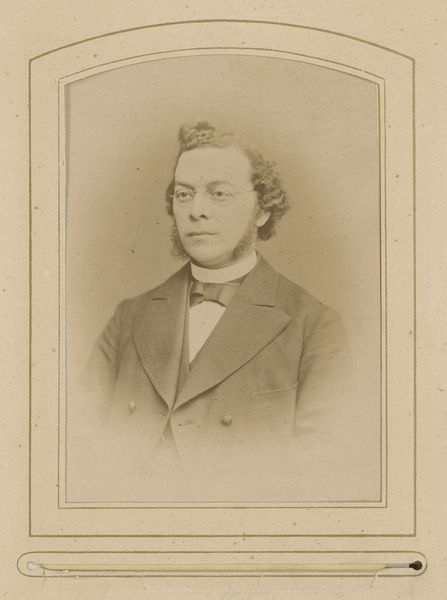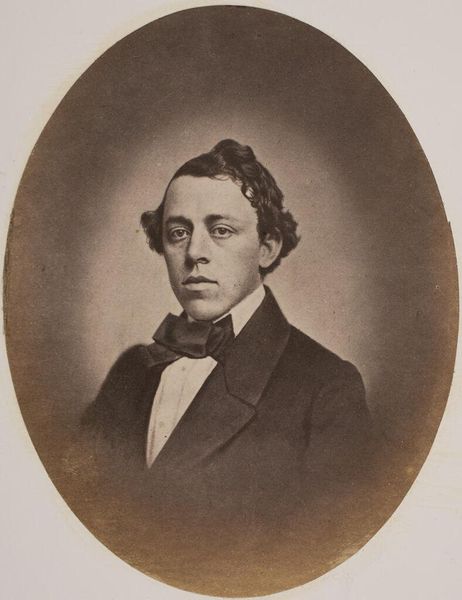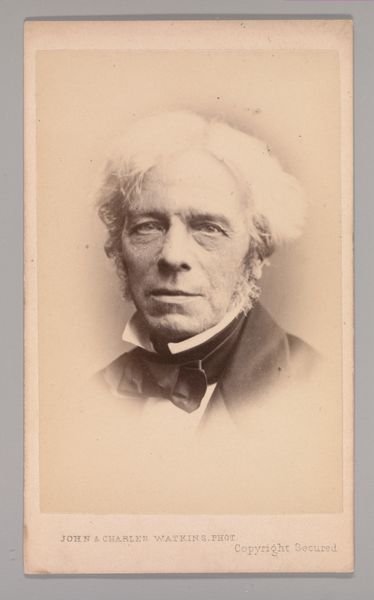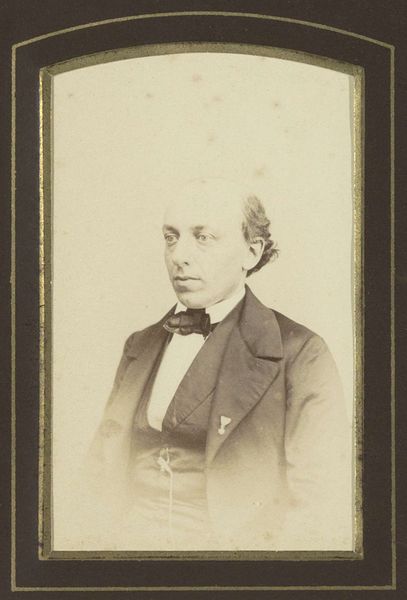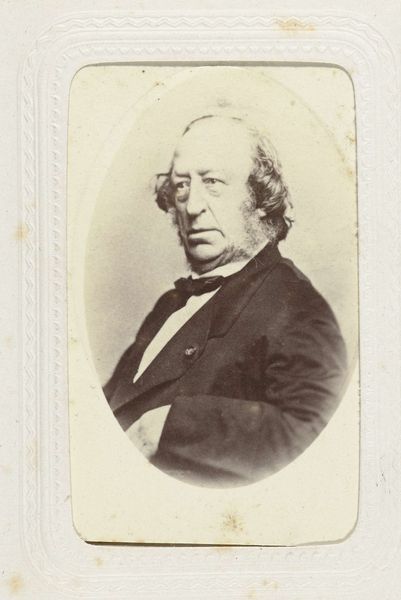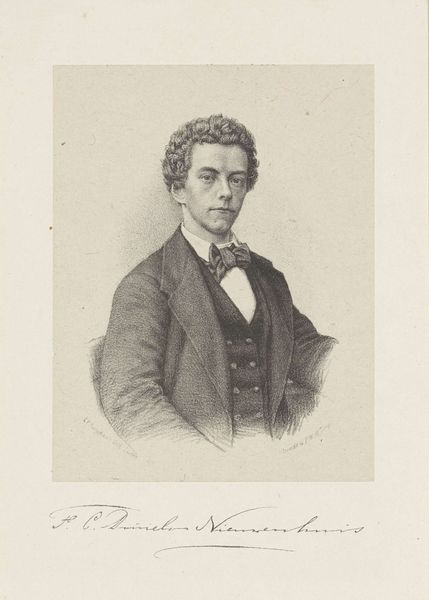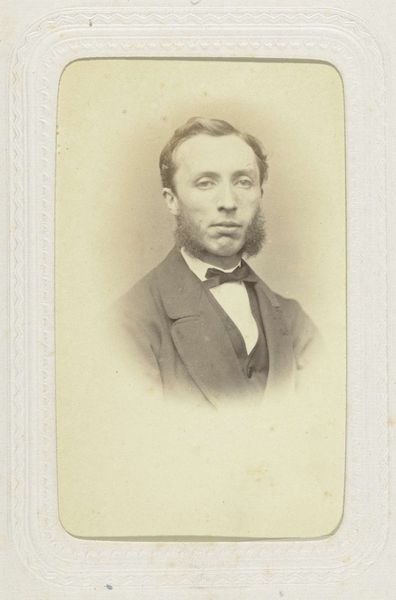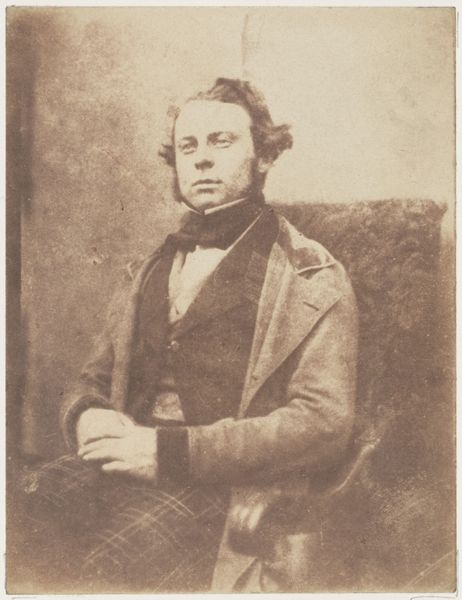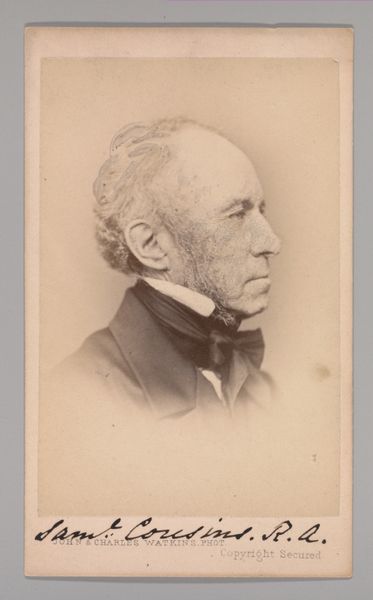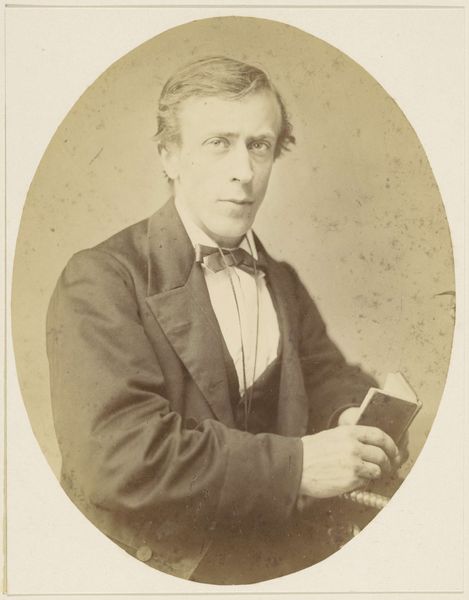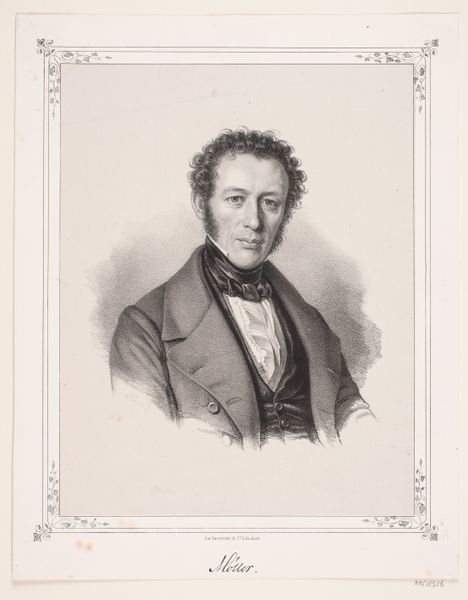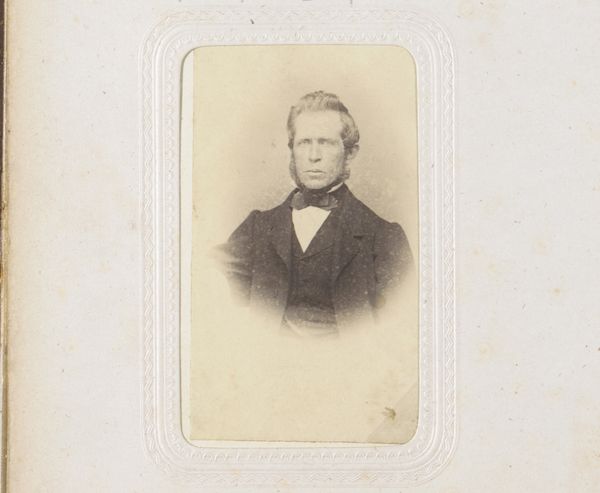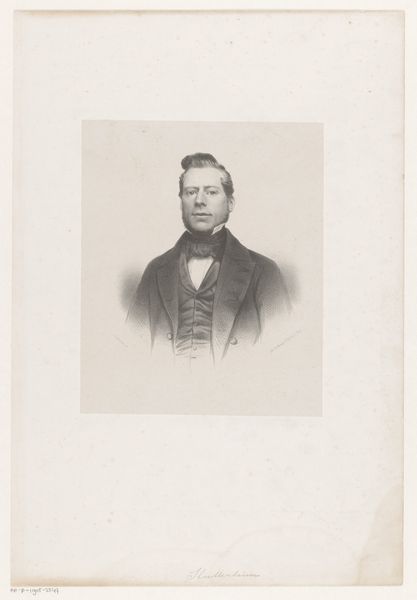
photography, gelatin-silver-print
#
portrait
#
photography
#
gelatin-silver-print
#
realism
Dimensions: height 101 mm, width 63 mm
Copyright: Rijks Museum: Open Domain
Editor: Here we have a gelatin silver print by Kannemans & Zoon, titled "Portret van een man met een das," placing it somewhere between 1860 and 1884. It's a rather somber portrait; the man's expression and the faded tones give it a serious feel. What do you see when you look at it? Curator: I see more than just a somber portrait. I see a carefully constructed performance of masculinity within a rapidly changing socio-political landscape. The 'das,' or cravat, isn't merely a fashion statement; it's a signifier of class and status, particularly in this era of emerging industrial capitalism. Who was this man, and what role did men like him play in solidifying patriarchal structures? What narratives are left out by such a carefully composed representation? Editor: That's fascinating. I hadn't thought about the cravat in that light, more as an accessory. So, you see this portrait as a statement about power and gender roles? Curator: Precisely. Photography at this time was becoming increasingly accessible, democratizing portraiture but simultaneously solidifying conventions. The subject's gaze, his tailored jacket, even the specific photographic process—gelatin silver, allowing for sharper details—all contributed to the construction of a particular identity. And let’s ask ourselves, who has access to having their image preserved this way, and why? Editor: It’s amazing how much context a simple portrait can hold. I will certainly not consider such photography in quite the same light ever again. Curator: Indeed. The history of art is intrinsically linked to the history of power, of social structures. Recognizing that changes how we understand any artwork, not only photography.
Comments
No comments
Be the first to comment and join the conversation on the ultimate creative platform.
